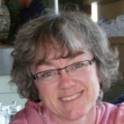
Article
Creation of a mobile rural workforce following undergraduate longitudinal rural immersion
Medical Teacher
(2016)
Abstract
Background: This study followed the workforce choices of 10-years of graduates from a longitudinal rural immersion
programme, which involved living for one academic year in a rural location as a medical student. The Rural Clinical School ofWestern Australia is a whole-of-state Rural Clinical School partnership involving two medical schools and fourteen rural/remotetowns.
Method: For this longitudinal cohort study, all consenting graduates were contacted annually after graduation, with the outcome
measure being rural work location (defined by the Australian Standard Geographical Classification –Remoteness Area) of anyduration.
Results: There were 417 consenting graduates. Between 16 and 50% of contacted alumni worked rurally for a period of each postgraduate
year. Aggregated over time, the majority took up to 30% of their postgraduate training rurally. There was considerablemovement in and out of rural work. About 17% of contacted and practicing graduates were working full time rurally at the 2013contact point. The majority remained in their state of training. The majority identified with GP and other rural-related colleges, andCollege-affiliation predicted amount of rural training time. Entry into rural work was equivalent for urban-origin and rural originalumni, suggesting one year of RCS is sufficient to convert commitment to rural work.
Conclusion: Undergraduate rural immersion is sufficient to create a graduate rural workforce that is far more mobile that was
previously appreciated.
Disciplines
Publication Date
2016
DOI
10.3109/0142159X.2015.1060304
Citation Information
Playford, D. E., Ng, W. Q., and Burkitt, T. (2016). Creation of a mobile rural workforce following undergraduate longitudinal rural immersion. Medical Teacher, 38(5), 498-503. DOI: 10.3109/0142159X.2015.1060304.
